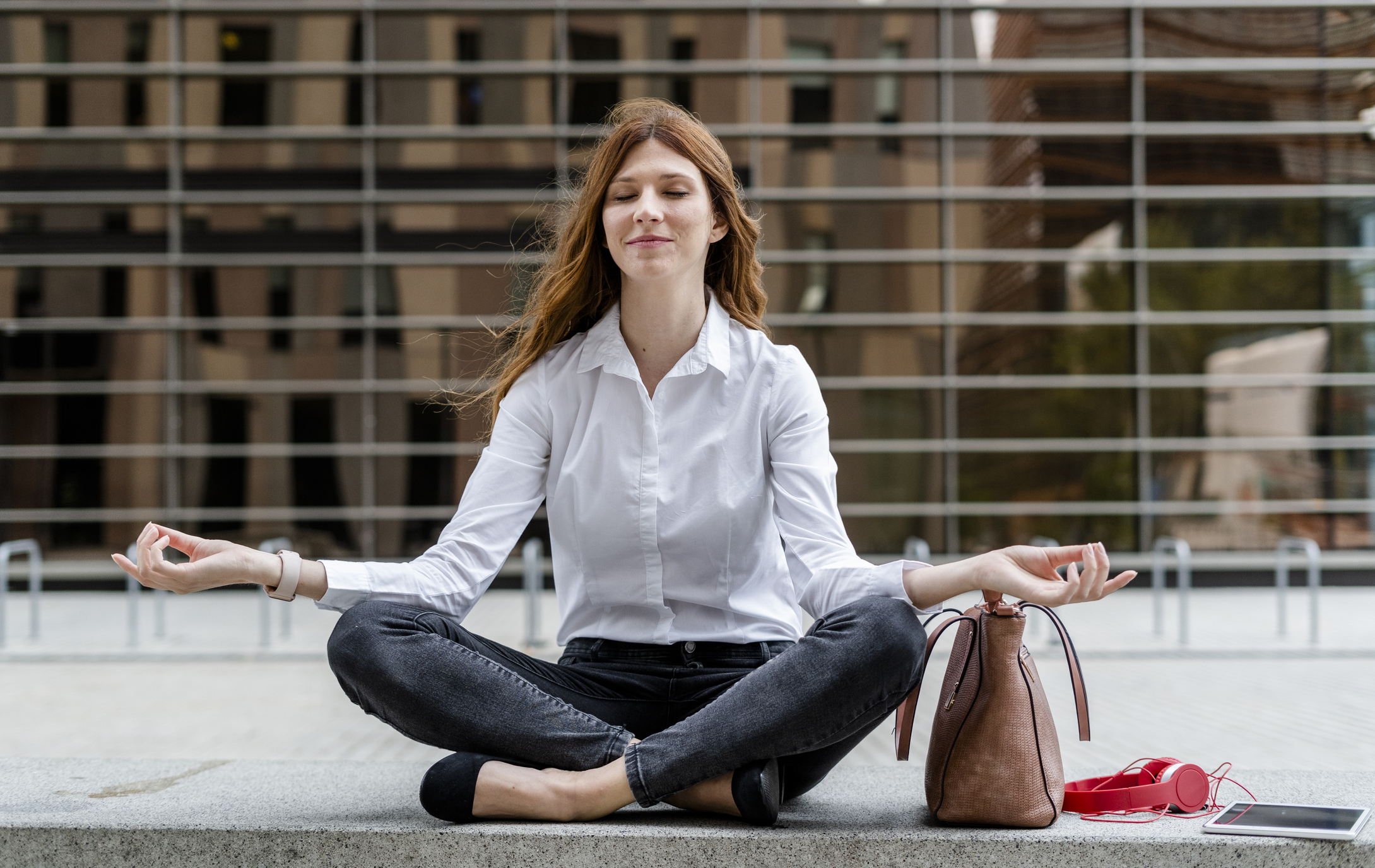Ever tried to curl up in a comfortable cross-legged position on the floor only to be met with a sharp, stinging pain in your knee? You’re not alone. This common discomfort, often experienced during yoga, meditation, or simply relaxing on the floor, can be frustrating and hinder those peaceful moments. Understanding the reasons behind this knee pain is the first step towards finding relief and regaining that flexibility.

Image: www.freepik.com
The ability to sit cross-legged, also known as the “Sukhasana” pose in yoga, depends on a complex interplay of joint flexibility, muscle strength, and overall skeletal alignment. When these factors are out of balance, it can lead to knee pain, discomfort, and even limitations in your range of motion. Let’s delve deeper into the common culprits behind knee pain during cross-legged sitting and explore some effective ways to address it.
Common Causes of Knee Pain When Sitting Cross-legged
1. Tightness in the Hamstrings and Hip Flexors
Sitting cross-legged requires a significant degree of flexibility in your hips and hamstrings. Tight hamstrings can pull on the pelvis, throwing the knee joint out of alignment. Similarly, tight hip flexors can restrict the movement of your thigh, leading to discomfort in the knee joint as you try to maintain the cross-legged position.
2. Weak Hip Abductors and External Rotators
These muscles are crucial for keeping your hips stable and preventing inward rotation of the thigh. When these muscles are weak, the knee joint can be subjected to excessive stress, leading to pain and discomfort. This is particularly true when sitting cross-legged for extended periods, placing increased pressure on the knee joint.

Image: time.com
3. Patellofemoral Pain Syndrome (PFPS)
This condition, also known as “runner’s knee,” involves pain around the kneecap due to friction or misalignment. While it’s often associated with athletic activities, it can also be exacerbated by sitting cross-legged for prolonged durations. The pressure on the knee joint in this position can increase the friction between the kneecap and thigh bone, leading to pain and inflammation.
4. Underlying Knee Conditions
Pre-existing knee conditions, such as arthritis, meniscus tears, or ligament injuries, can worsen with cross-legged sitting. If you already experience knee pain even in other activities, sitting cross-legged is likely to exacerbate the discomfort. It’s essential to consult a healthcare professional for proper diagnosis and treatment of underlying knee conditions.
5. Improper Posture and Alignment
Even if you have good flexibility and muscle strength, poor posture or incorrect alignment while sitting cross-legged can still lead to knee pain. For example, if your knees are higher than your hips or your weight is unevenly distributed, you are placing unnecessary strain on your knee joints. Learning proper alignment and maintaining it throughout your sitting session is crucial.
Effective Strategies for Relief and Prevention
1. Stretching and Flexibility Exercises
Stretching your hamstrings, hip flexors, and surrounding muscles is fundamental to improving flexibility and reducing knee pain when sitting cross-legged. Here are some effective stretches:
- Hamstring Stretch: Sit on the floor with legs extended. Lean forward, reaching for your toes. Hold for 30 seconds.
- Hip Flexor Stretch: Kneel down on one knee, with the other leg extended forward. Gently lean forward, feeling the stretch in your hip flexor. Hold for 30 seconds and repeat on the other side.
- Pigeon Pose: Start on all fours. Bring one knee forward and place it behind your wrist, with the other leg extended behind you. Gently lean forward, feeling the stretch in your hip flexors and hamstring. Hold for 30 seconds and repeat on the other side.
2. Strengthening Exercises
Target your hip abductors, external rotators, and quadriceps muscles to improve stability and reduce strain on the knee joint. Here are some exercises you can try:
- Clamshell Exercise: Lie on your side with your knees bent. Lift your top knee, keeping your feet together. Hold for a few seconds and repeat.
- Glute Bridge: Lie on your back with knees bent and feet flat on the floor. Lift your hips off the ground, squeezing your glutes. Hold for a few seconds and repeat.
- Squats: Stand with your feet shoulder-width apart. Squat down, keeping your back straight and knees aligned with your toes. Hold for a few seconds and repeat. Start with a few repetitions and gradually increase as you gain strength.
3. Proper Posture and Alignment
When sitting cross-legged, pay attention to your alignment. Your knees should be lower than your hips, and your weight should be evenly distributed on your sit bones. If you’re new to cross-legged sitting, start with shorter sessions and gradually increase the duration over time.
4. Use Props and Support
Using a cushion or pillow under your hips can help elevate your knees and reduce pressure on your knee joints. This can also improve your comfort and stability, especially if you have poor flexibility.
5. Consultation with a Healthcare Professional
If your knee pain is persistent, severe, or accompanied by other symptoms like swelling or instability, it’s crucial to consult a healthcare professional. They can help diagnose the underlying cause of the pain and recommend appropriate treatment options, which might include physical therapy, medication, or other interventions.
Knee Pain When Sitting Cross Legged On Floor
Conclusion
Experiencing knee pain when sitting cross-legged can be frustrating, but understanding the causes and implementing effective strategies for relief and prevention can empower you to overcome this challenge. Stretching, strengthening, maintaining proper alignment, and seeking professional guidance are key steps towards reclaiming your comfort and flexibility. Remember, finding that perfect cross-legged sitting experience is a journey, and with patience, persistence, and a little bit of self-care, you can achieve the desired results and enjoy those peaceful moments on the floor once again.






